May 2, 2014
Air Date: May 2, 2014
FULL SHOW
SEGMENTS
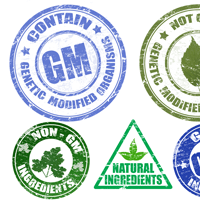
Pesticides Found in GM Soy; Vermont Orders Labels
View the page for this story
A recent study found “extreme levels” of the herbicide glyphosate, linked to birth defects and Non-Hodgkin’s Lymphoma, in genetically modified soybeans farmed in Iowa. The US federal government doesn’t recognize a material difference between GM and non-GM crops but Vermont will require all genetically modified foods carry labels from 2016. Scientist Michael Hansen of Consumers' Union discusses GM food safety with host Steve Curwood. (07:00)
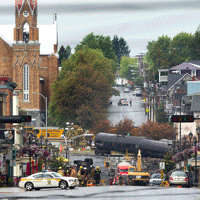
Canada Regulates Dangerous Oil Trains
View the page for this story
On April 30th, in what has become an increasingly common fiery accident, a train carrying crude oil derailed in Lynchburg, Virginia. Millions of gallons of crude travel across North America by rail and though the United States has done little to regulate oil trains, Globe and Mail reporter Kim Mackrael tells host Steve Curwood that Canada has imposed new rules designed to make them safer and the US may follow suit. (07:15)
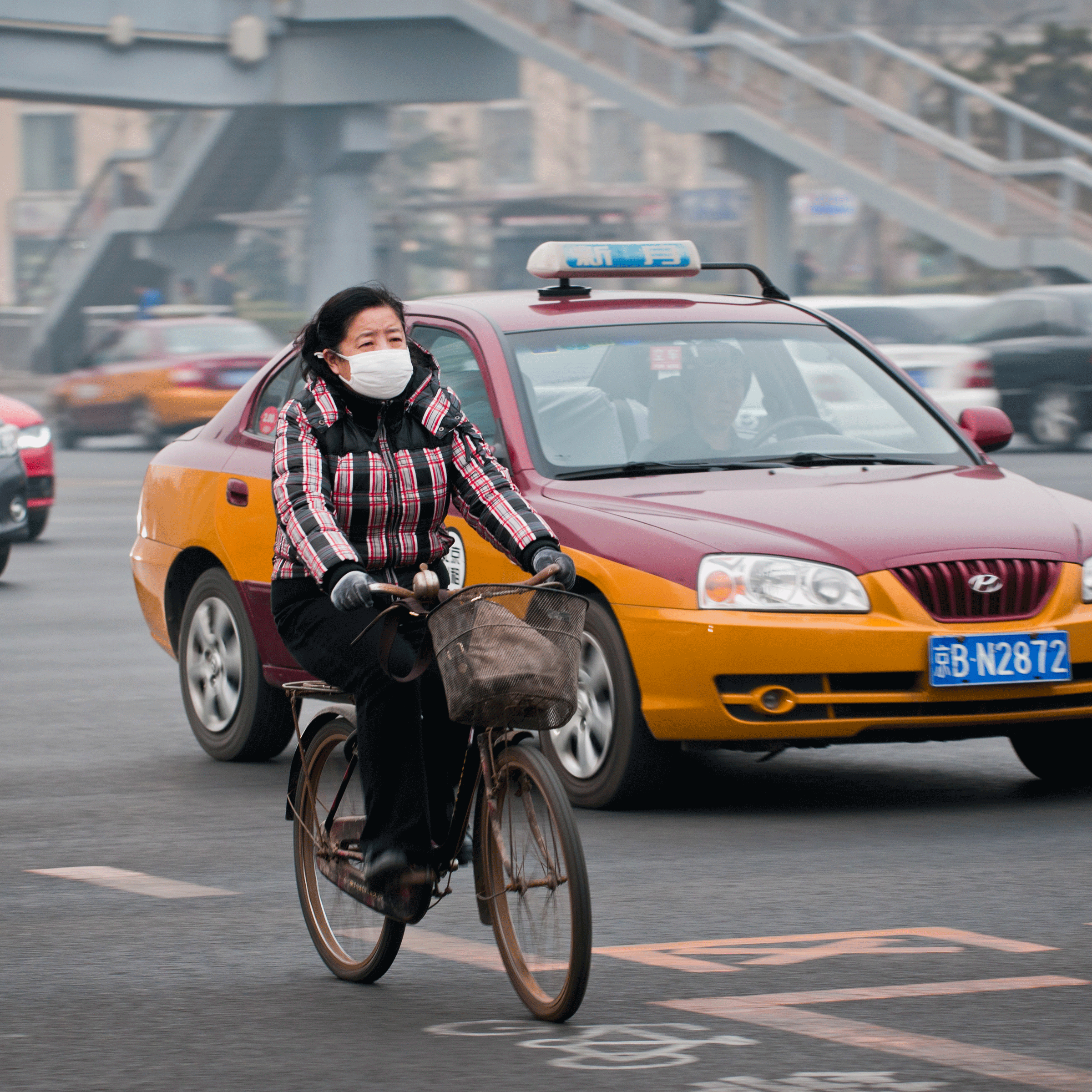
Ozone Pollution on the Rise
View the page for this story
The American Lung Association puts out an annual report on the state of air quality in the United States. Though the air overall is getting cleaner, Janice Nolen of the Lung Association tells host Steve Curwood this year's report shows a growing ground level ozone problem. Still, a recent Supreme Court decision has clean air advocates feeling optimistic. (06:30)

Clearing the Air In Houston
View the page for this story
Houston, Texas, is home to the largest chemical hub in the Americas and is one of the smoggiest US cities. As the Allegheny Front’s Reid Frazier reports, the city is working to clean up its air but still has a long way to go. (07:30)
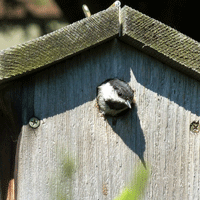
BirdNote — The Perfect Nest box
View the page for this story
The key to attracting native birds to your garden is to offer them some food and the ideal home - and as Michael Stein explains, that means the perfect nest box. (2:00) (02:00)

Beyond the Headlines
View the page for this story
In this week’s trip beyond the headlines, the publisher of Daily Climate dot org Peter Dykstra tells host Steve Curwood about a Missouri air pollution program so successful it's going broke, and new pollution laws in smoggy China. (04:05)
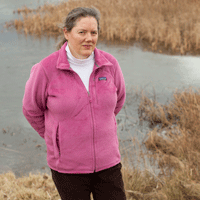
Goldman Environmental Prize Winners
View the page for this story
Each year, one environmental activist from each of the six inhabited continents is awarded the Goldman Environmental Prize and a cash award. Host Steve Curwood talks with two of this year’s winners -- Helen Slottje from the US who helped nearly two hundred towns in upstate New York block fracking, and Desmond D’Sa from South Africa who worked to close a toxic landfill in his community of South Durban in KwaZulu Natal. Other 2014 Goldman Prize winners include Ramesh Agrawal of India, Suren Gazaryan of Russia, Rudi Putra of India and Ruth Buendia of Peru. (12:45)
Show Credits and Funders
Show Transcript
HOST: Steve Curwood
GUESTS: Michael Hansen, Kim Mackrael, Janice Nolen, Desmond D’Sa, Helen Slottje
REPORTERS: Reid Frazier, Peter Dykstra, Michael Stein
[THEME]
CURWOOD: From Public Radio International, this is Living on Earth.
[THEME]
CURWOOD: I’m Steve Curwood. In markets, convenience stores, fast food joints - and likely on your own table - genetically modified ingredients are everywhere.
HANSEN: There's chips, crackers, cereals, cookies, soft drinks, tofu, veggie burgers, the engineered soy or engineered corn, that's in 70 to 80 percent of virtually all processed products.
CURWOOD: And new research finds GM soy contains disturbing levels of pesticide residues as well. Also, cutting smog and ozone pollution in Houston...it's getting better slowly.
SHELLEY: Better does not mean good. Asthma patients will tell you, for example, that there is no question for them about when ozone levels are high because they feel it immediately when they go outside.
CURWOOD: That, a BirdNote, and more this week on Living on Earth. Stick around.
[NEWSBREAK MUSIC: Boards Of Canada “Zoetrope” from “In a Beautiful Place Out In The Country” (Warp Records 2000)]
ANNOUNCER: Funding for Living on Earth comes from Stonyfield Farm, makers of organic yogurt, smoothies and more.
Pesticides Found in GM Soy; Vermont Orders Labels

The majority of processed foods in the US are made in part with genetically modified corn, soy, or sugar beets. GM soy has been shown to contain the pesticide glyphosate. Starting in July of 2016 all genetically modified foods sold in Vermont will have to be labeled as such.(bigstockimages.com)
CURWOOD: From the Jennifer and Ted Stanley Studios in Boston and PRI, this is Living on Earth. I’m Steve Curwood. When transgenic food came on the market, the makers claimed it was substantially the same as natural food, so it didn’t need to be regulated. But a recent Norwegian-led study in Iowa found that soy genetically modified to tolerate the herbicide glyphosate had considerable levels of the chemical’s residues at harvest, compared to conventional soybeans, which had none. Some 85 percent of corn, 93 percent of soybeans, and 98 percent of sugar beets are genetically modified and many European countries either ban such crops or requiring labeling. Well, with evidence mounting that GM foods are not the same as conventional ones, Vermont has become the first state to require labels on all food products that contain GM ingredients. Here to discuss the Vermont law and the new study of soy is Michael Hansen, Senior Staff Scientist at Consumers Union.
HANSEN: What the researchers basically found is...they tested 30 sets of samples. There was 11 from organic, 10 from conventional fields, and then 10 from the Roundup ready [pesticide-sprayed] fields. What they found is with the engineered soybeans every single sample had residues of both glyphosate and AMPA (Aminomethylphosphonic acid), which is its main breakdown product, and they averaged about four parts per million and it was undetectable in either the organic or conventional.

Starting in July of 2016 all genetically modified foods sold in Vermont will have to be labeled as such. (bigstockimages.com)
CURWOOD: Now Monsanto, the company that makes Roundup, once called the amount of glyphosate found in these soybeans “extreme levels”. Why did they make that statement, and what would they say now?
HANSEN: Well, they made that statement back in 1999, and just so you know, there was...what they found in this study was, well, glyphosate was about 3.3 parts per million, and its breakdown product was 5.7. So total there was about nine parts per millon. And back in ’99, they said they would consider three or four parts per million to be excessively high levels. Since then, however, what’s happened is they’ve managed to get the levels increased. So in the United States, for example, the tolerance for soybeans is actually 20 parts per million.
CURWOOD: How dangerous are those amounts?
HANSEN: We don’t really know, although, there is increasing evidence that glyphosate is not the benign chemical that people thought it was. For example, last year, there was a study published that looked at just breast cancer cells that are sensitive to hormones, and they actually found incredibly low levels of glyphosate. We’re talking the parts per billion range, and also down to the parts per trillion range, there were an effect. That’s one thing. Second, there’s increasing evidence that glyphosate might cause birth defects, and it’s also been linked in epidemiology to Non-Hodgkins lymphoma.
CURWOOD: Michael Hansen, where is this GMO found in the market with these pesticide residues?
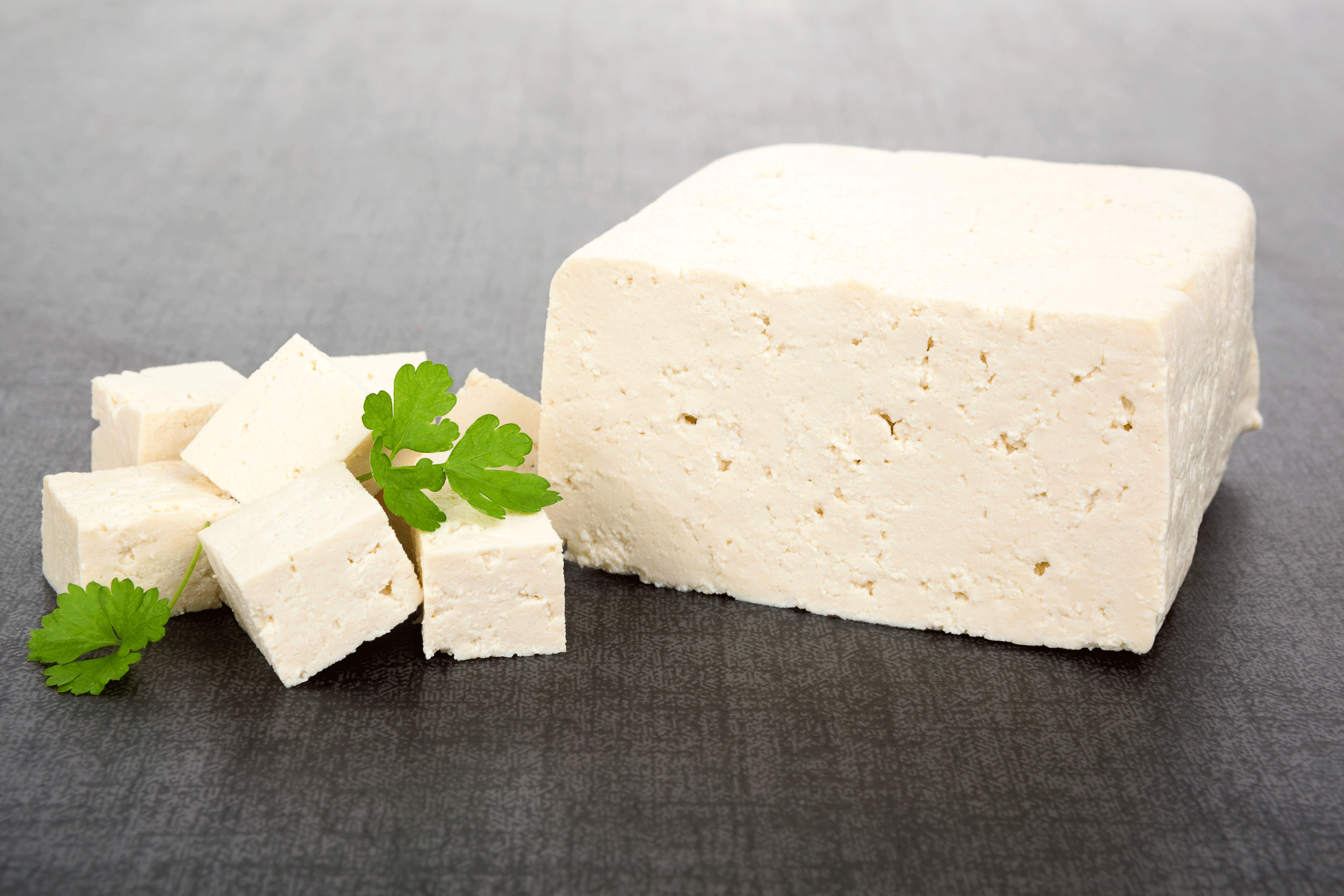
93% of soybeans grown in the US are genetically modified. GM soy tested in Iowa was found to contain the pesticide glyphosate. (bigstockphotos.com)
HANSEN: The engineered soy, or engineered corn, that’s in 70 to 80 percent of virtually all processed products. Anything that has either soybeans in it, or potentially high-fructose corn syrup, so in virtually any processed food, there’s chips, crackers, cookies, cereals, soft drinks. And if it’s soy: tofu, veggie burgers...almost anything that you can think of because corn and soy are in a lot of things.
CURWOOD: So how do federal regulators regard the issue of issue of glyphosates and GMOs more broadly?
HANSEN: Since the US doesn’t recognize a difference between conventional breeding and genetic engineering, what they say is if we just look at the plants and they’re “substantially equivalent” then there’s no reason to do a safety study or even label them because they’re the same. Presently the EPA and regulators consider glyphosate fairly benign, so they say that data justifies it’s a safe level to have it up to 20 parts per million in soy beans, for example.
CURWOOD: Aside from the pesticide residues, what differences, if any, did the study find between GMO, that is, engineered soybeans, and those are grown conventionally or organically?
HANSEN: Well, what they did find is the organic soybeans had the healthiest nutritional profile. There was actually more sugars and significantly more total protein, zinc, and less fiber in the organic soybeans compared to either the conventional or the GM soy.
CURWOOD: So, does that mean they are not substantially the same?
HANSEN: That’s correct. Well, the organic were significantly different in nutritional qualities compared to either the conventional or the engineered. But that could be because it’s a different variety, because often when you’re growing something organic it’s for a special market, so that market might actually have wanted a higher quality, more nutritious soybean, whereas conventional soy, most of that’s fed to animals, so it would depend. The organic market is probably going more for soy that might be used in human consumption.
CURWOOD: Michael Hansen, I want to turn now to news from Vermont, which recently became the first state in the country to require all food products containing GMO ingredients to be labeled as such. What do you see for the future of GMO foods in the US given the new Vermont law?

Soft drinks in the US are often made with high fructose corn syrup from GM corn. (Bigstockphoto.com)
HANSEN: Well, I think what’s important here is this Vermont law is going to go into effect in July of 2016, so in two years time. What this will do is, this will spur other states to potentially pass labeling laws, and then I think ultimately, that will spur action at the federal level.
CURWOOD: So, as I understand it, there are other states that have similar bills to Vermont’s new law working their way through the legislature. Can you tell me about a couple of those please?
HANSEN: Yes, the other states that have action is California. There’s a mandatory labeling bill that’s moving through the senate, and it’s going to be heard in the appropriations committee probably on May 12. In New York, there’s a bill that would require labeling, and it should be pointed out in Oregon it looks like there’s going to be a ballot initiative in the fall, another one like happened in California and Washington.
CURWOOD: With Vermont now passing a GMO labeling law, to what extent will manufacturers just have, well, one package.
HANSEN: I think ultimately where this is going to go because I think that very soon there will be a move toward having labeling at the national level, and I think Vermont is going to help spur that.
CURWOOD: Michael Hansen is Senior Staff Scientist at Consumers Union. Thanks so much for taking the time today.
HANSEN: You're welcome. Glad to do this.
Related links:
- Study: Compositional differences in soybeans on the market: Glyphosate accumulates in Roundup Ready GM soybeans
- Consumers Union
[MUSIC: Vampires “Extinction” from South Coasting (JazzGrove records 2008)]
Canada Regulates Dangerous Oil Trains
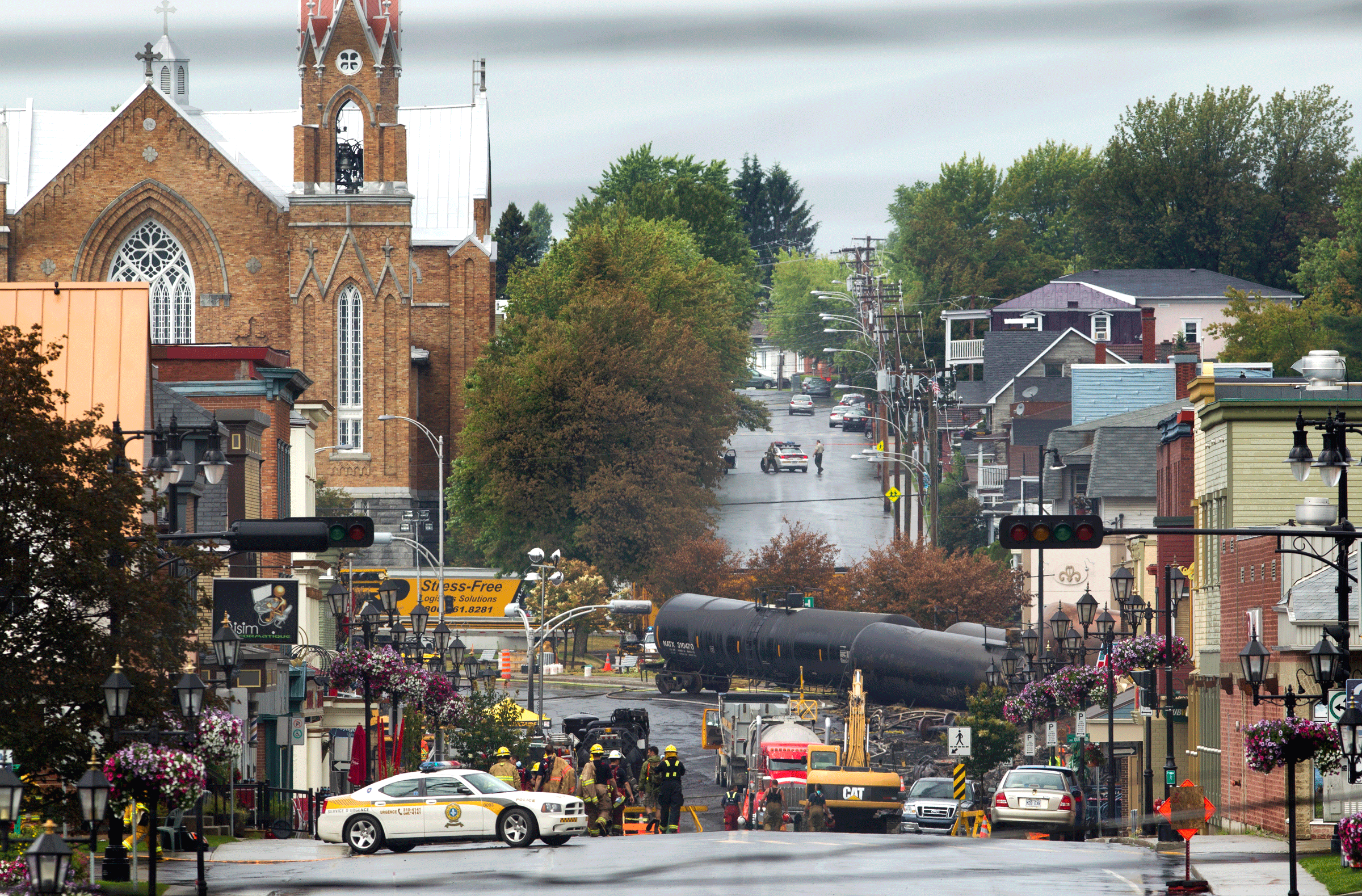
47 people died when an oil train derailed and exploded in the small Canadian town in the summer of 2013. (Photo: Globe and Mail photographer Moe Doiron)
CURWOOD: In Lynchburg, Virginia, on April 30, a train carrying crude oil derailed, and some cars exploded into a ball of fire, and then fell into the James River. There were no injuries, but this was not an isolated incident; a number of explosive train derailments, including the tragedy in Lac-Megantic, Quebec, which killed 44 people, have raised the alarm about the safety of shipping oil by rail. The oil now gushing from the Bakken Shale in North Dakota and the Alberta Tar Sands has overwhelmed pipeline capacity, and millions of gallons now ride the rails, often in older tanker cars vulnerable to rupture. In response to increased alarm and public pressure, Canada has just released a new set of regulations for oil trains. Joining us now to discuss this news is Kim Mackrael, reporter for the Globe and Mail based in Ottawa.
MACKRAEL: The rules that were announced last week by the Transport Minister, which is Lisa Raitt, they cover three basic areas, and they apply to the structure of the cars that are carrying these, that commonly carry the oil by rail, the emergency plans that come into play if an accident occurs, and the risk analysis that railways are supposed to use to look at how risky it is to carry a particularly dangerous good by rail.
CURWOOD: So talk to me about the rules regarding rail car structure.
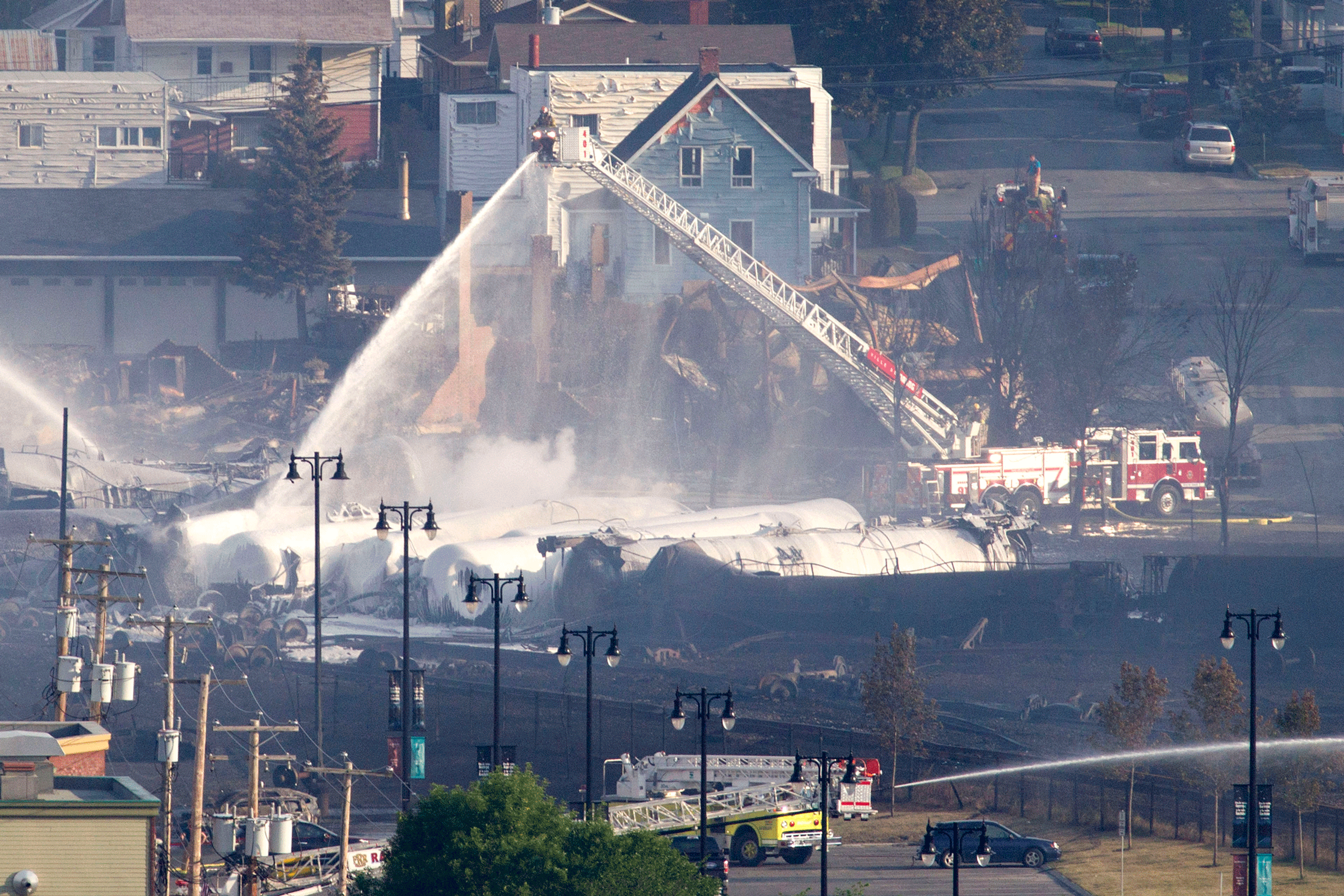
The cleanup in Lac-Megantic, Quebec. (Photo: Globe and Mail photographer Moe Doiron)
MACKRAEL: The cars that are normally used to carry crude oil are called DOT-111s, and these cars have been around for a long time, many of the ones that are on the tracks right now date back to the 1970s, and they sort of look like large cylinders, and usually black, and once I saw them in Lac-Megantic they’re identifiable everywhere. You can see them on the tracks. The problem with them that’s been raised is that before October of 2011, the way there were built was identified as not very strong. It doesn’t have a proper lining around the outside of the tank. There are concerns that it can explode easily or corrode from the oil that’s being put inside it. Since 2011, the industry’s been making it to a higher standard. But that’s only a fraction of the cars that are used today. So the new rules that were announced are that within three years, companies can no longer carry crude oil using the older model, the pre-2011 cars when they’re carrying it through Canada.
CURWOOD: Now what about rules regarding emergency plans in case of accidents?
MACKRAEL: Yes, so that’s another area that was a pretty serious gap to not have been considered earlier, and the reason for it is not until the accident in Lac-Megantic, oil wasn’t really considered to be explosive or dangerous to that level. So these emergency plans exist for a lot of other dangerous goods but never for oil, and this rule for the first time means that companies who import oil have to actually come up with these plans and make sure that municipalities are prepared.
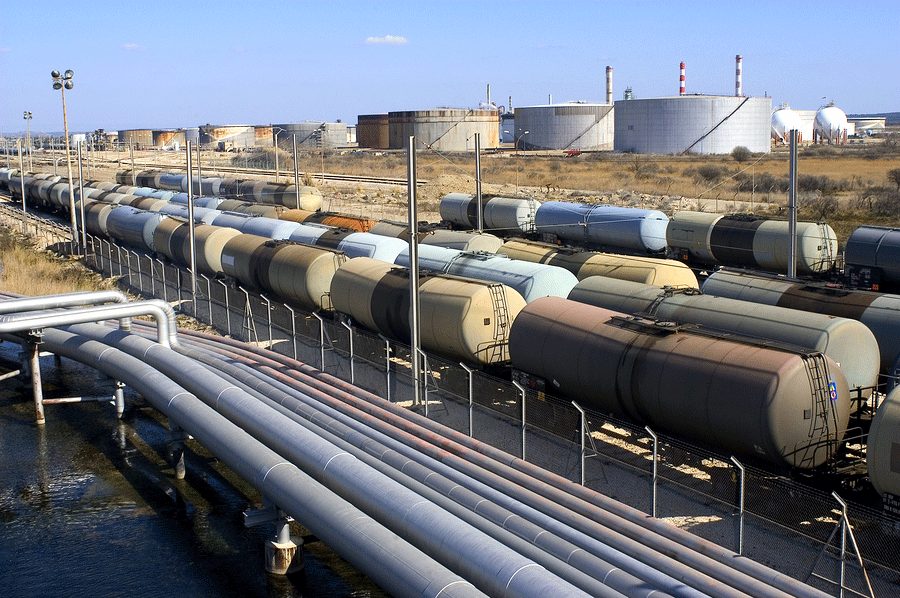
Oil train cars (photo: bigstockphoto.com)
CURWOOD: What would come out of rulemaking regarding risk analysis?
MACKRAEL: Yeah, on that one, in a way it follows some of the discussions that have been happening in the United States. So recently, there was an agreement that’s voluntary between railways and the Department of Transporation in the U.S. saying that railways would be doing a better risk analysis of routes carrying dangerous goods, but they’ll also in the United States have to look at whether there are safer routes to be carrying crude oil on. In Canada, they didn’t quite go that far, and part of that is recognition that there aren’t a lot of route alternatives here. So here the question is more about looking at the possible risks going through big communities, passing water supplies, that sort of thing, and right now the discussion is around slowing down trains when you’re going through higher-risk areas.
CURWOOD: Now how is the oil industry responding, reacting to these regulations?
MACKRAEL: The response has been overall relatively positive. I think there’s some recognition that this was a pretty massive disaster and recognition that change is coming, and at the same time, the one they’ve expressed more concern about is that the changes for the DOT-111s, and that’s largely because of the tight timeline that was given. So three years may sound like a lot of time to still have cars that have been flagged as not very safe on the roads, but for industry their response has been, “Well, that doesn’t give us much time to build or retrofit the older cars to make sure they’re able to use those.” So if the changes are just Canadian changes, if the United States doesn’t require the same thing, then they may be able to just shift around the cars that they’re using. If the same rules are required in the United States, then you could have it become more difficult for them to supply the industry with enough of the newer cars to keep oil moving at the pace it’s been moving.

47 people died when an oil train derailed and exploded in the small Canadian town in the summer of 2013. (Photo: Globe and Mail photographer Moe Doiron)
CURWOOD: So, in other words, the more dangerous cars would be sent to the US if there’s no rule here.
MACKRAEL: I think that’s a logical conclusion you have to come to at this point. We don’t know yet, but it does look as if some rules are underway in the United States. So there may be a change. But if nothing is in place before those three years, then it’s reasonable to be thinking that leasing companies would be more likely to be sending the older cars through to the United States and the newer cars to Canada.
CURWOOD: Kim, to what extent do you think these regulations could limit the amount of oil getting to market?
MACKRAEL: Yes, it’s a good question. I think it will be a little bit hard to see until we see a rule come out of the United States on DOT-111s. If the change in terms of being allowed to use only the newer cars, if that’s only a Canadian rule, I’m not sure we would see a huge change. There are enough of the newer cars that you can sort of manage that. If the United States goes ahead with requiring the newer cars, then, yes, there’s a real chance that, depending on the timelines, it will be very difficult for railways to keep up with demand, to be moving the amount of crude oil across the country and across the continent that they are right now.
CURWOOD: Now what do you think about the future of shipping oil by rail?
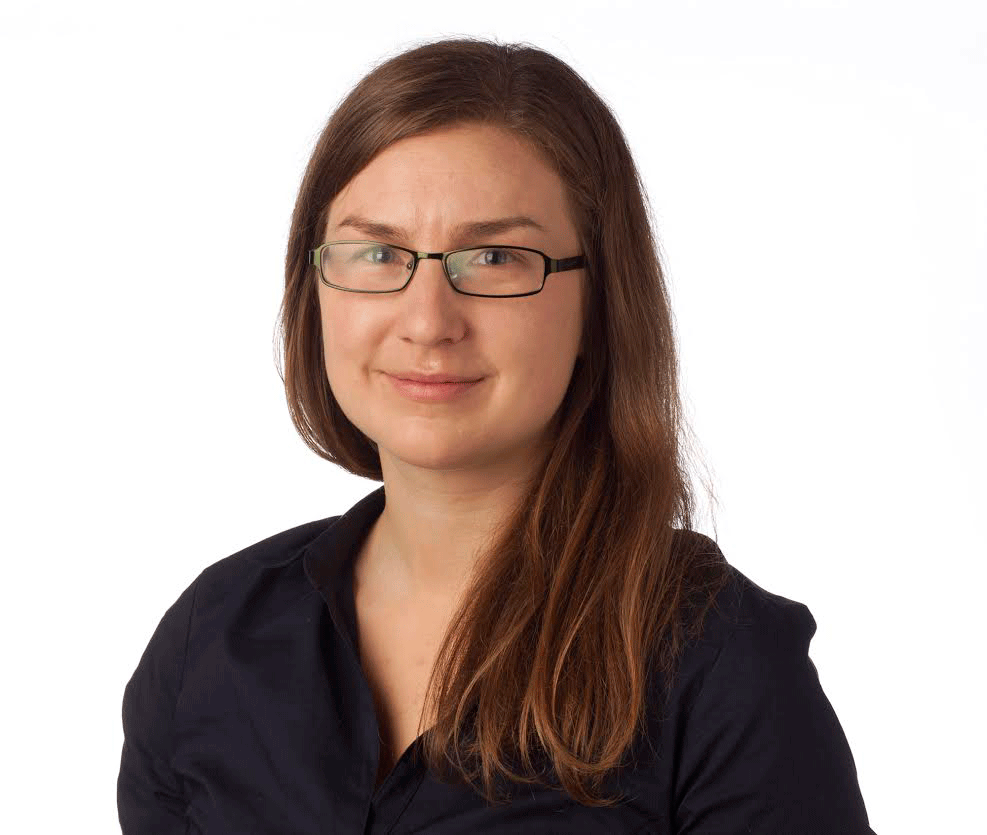
Kim Mackrael (photo: The Globe and Mail)
MACKRAEL: Well, this has raised a - with the accident in Lac-Megantic and in very quick succession the other accidents in North Dakota and Alabama, really raised a lot of questions about the safety of it. And Canada, in particular, a lot of our cities were built because of the railroads and Lac-Megantic itself actually. The mayor has acknowledged that it wouldn’t exist if the railroad hadn’t been built there in the first place. And so, at this point as we become a little bit more aware about the dangers of the goods that are going through, I think a lot of communities and a lot people are really thinking about what that reality means if a serious accident happens. You do have railways a massive amount of oil that is, in particular in the case of the Bakken, very volatile, very prone to exploding. I hope we don’t see any more of these, but we certainly haven’t eliminated all the risk on this.
CURWOOD: Kim Mackrael is a Reporter for the Globe and Mail based in Ottawa, Canada. Thanks so much, Kim.
MACKRAEL: Thank you very much.
Related links:
- Check out Kim’s story on the latest Transport Canada rules
- Read more about the reaction to the new rules
- Kim Mackrael’s story on the derailment in Lynchburg, Virginia
[MUSIC: Little Walter “Blue Lights” from Walter’s Blues Remastered (Gralin Music 2011) Happy Birthday Marion Walter Jacobs aka Little Walter 05/01/1930 – 02/15/1968)]
CURWOOD: Coming up...fresher air for some American cities. Keep listening to Living on Earth.
[CUTAWAY MUSIC: Blues For Jerry” from Piano In The Foreground (Columbia Records 2001 Reissue) Happy Birthday Duke 04/29/1899 – 05/24/1974)]
Ozone Pollution on the Rise
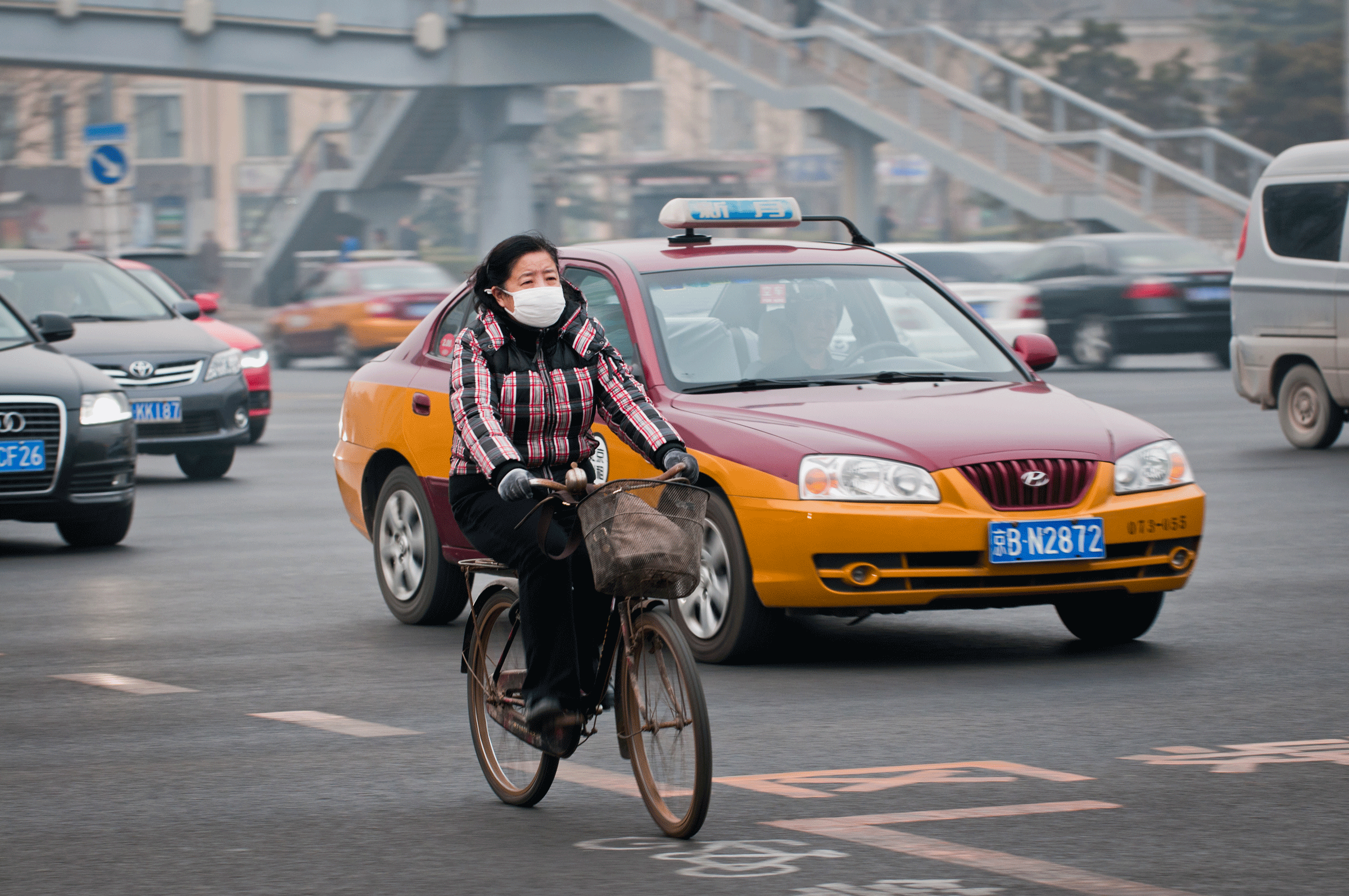
Air pollution in the United States isn’t as bad as China, but in recent years we’ve seen an increase in ozone pollution (photo: bigstockphoto.com)
CURWOOD: It's Living on Earth, I'm Steve Curwood. Every year the American Lung Association puts out a State of the Air report. And since the Clean Air Act became law, the nation's air has gotten cleaner, and increasingly regulations on vehicles and power plants have helped cement the gains, but there's still plenty of room for improvement. Janice Nolen is the Assistant Vice President of National Policy and Advocacy for the Lung Association, and one of the authors of the report.
She says there's definitely some good news, but with the planet getting hotter we won’t all be able to breathe easy.
NOLEN: We're actually doing better in particle pollution, year-round particle pollution levels, but we have much ozone spread around the nation. A hot summer in 2012 meant that our ozone levels went up for much of the nation, and as a result, we have more people who are breathing unhealthy air than in our previous report.
CURWOOD: How does climate change make ozone worse, if it does?
NOLEN: It does. As we get warmer temperatures, the raw ingredients that create ozone cook better. The raw ingredients, the gases, volatile organic compounds, nitrogen oxide and carbon monoxide come from those smoke stacks and tailpipes and they cook in sunlight, and heat makes that cook better. So when we’re trying to deal with ozone by having to have that heat, it makes for a much more receptive area for the ozone to form. And with carbon pollution, carbon pollution adds to that temperature, it adds to that heat. And so, as we can reduce the carbon pollution, we’re going to have a better shot at being able to reduce the ozone overall.
CURWOOD: What are the health impacts of ozone?
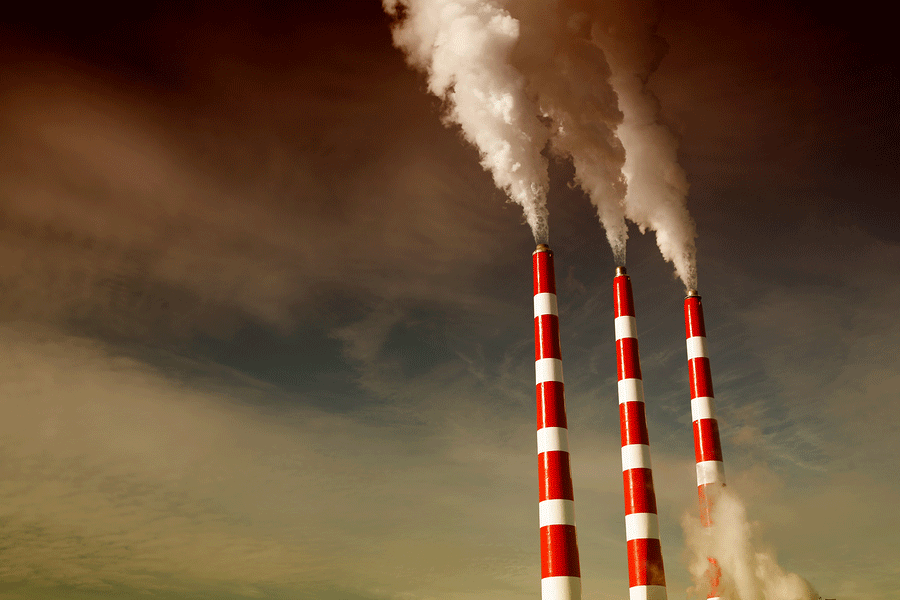
Air pollution is a major health risk, particularly for children and the elderly (photo: bigstockphoto.com)
NOLEN: Ozone is a highly irritating gas. It irritates the lungs as if you had a sunburn or if somebody was rubbing sandpaper over a wound. And what that ultimately does is cause things like asthma attacks, coughing and wheezing. It can send people to the hospital and the emergency room. It can even shorten lives, and now we’re learning that it may have things that have more unusual impacts that we hadn’t appreciated, like increasing the risk of having a low birthweight in a newborn baby, so the more we’re learning about these pollutants, especially about ozones, the more harm we’re finding as a result of that. Particle pollution is even more serious. The particle pollution that we’ve been reducing is extremely lethal. It can cause heart attacks and stroke, it can also increase the risk of lung cancer.
CURWOOD: Geographically, where is ozone pollution really bad?
NOLEN: In most all of the country. We have a lot of areas in the big cities, urban areas, and in places where we’re seeing a lot of extraction in oil and gas where we’re seeing a lot of the raw ingredients for ozone being created. So we’re seeing some places that hadn’t had ozone problems before, having them. Lots of the country where it’s warmer, sunnier, where the raw ingredients can cook well and create it. So, a big part of the middle part of the country.
CURWOOD: What cities are the worst?
NOLEN: The worst for ozone are a lot of the California cities. Los Angeles has been number one on our list of most polluted cities for a long, long time. And we also have cities like Bakersfield, Fresno, Sacramento, but after you get out of the California area: Houston, Dallas, Washington DC, Las Vegas - all of those are among our 10 most polluted cities for ozone.
CURWOOD: In terms of ozone, what particular populations of people are at risk, and is that income related at all?
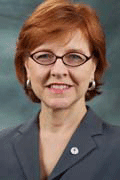
Janice Nolen (photo: American Lung Association)
NOLEN: In some ways, actually both ozone and particle pollution affect some of the same people. People who are children or teenagers because your lungs keep growing until you’re 18 years of age. People who are over 65. People who have chronic lung disease, chronic heart disease, people with diabetes, people who are healthy adults who exercise or work outdoors. And also, low-income people. Those people, for many reasons, are folks who have some of the highest impacts and are most vulnerable from pollution of all sources.
CURWOOD: From a policy perspective, what needs to be done then to address the ozone problem?
NOLEN: We need to have a tighter ozone standard. The EPA is looking at the science right now, and they are required to review this every five years in order to make sure the goal that we’re setting, the official standard for ozone, is right. And what we know is that it’s not, that there’s more pollution in the air, and that the levels that are much lower in ozone actually are harmful, and so we need to strengthen that standard, and that’s going on right now, and that will help us better prepare for the future because it will help us aim at the right goal for cleaning up pollution.
CURWOOD: Now, the Supreme Court recently made a big decision when it comes to air quality on something called the “cross-state” rule. Tell us about it, why you think its important.
NOLEN: We were really pleased with the Supreme Court decision about the “cross-state rule” because it’s based in a part of the Clean Air Act they call the “good neighbor rule”, and that means that polluters that are in another state are not allowed to produce pollution that blows into a downwind state and causes unhealthy air. EPA has been trying to deal with that because the states haven’t regulated themselves adequately, and so EPA provided some rules on how to reduce that. And that was challenged all the way to the Supreme Court, and the Supreme Court said absolutely, this is a provision that needs to be upheld, EPA has done a good job at trying to figure that out, and we need to make sure that pollution isn’t blown across the state line. For example, in Maryland, where they found that so much of pollution in Maryland is blown in from out of state that they really can’t meet their goal for cleaning up the air without having some help from the federal government. And the Supreme Court allowed that to happen.
CURWOOD: What kind of legal precedent does this set for the rest of President Obama’s efforts to regulate carbon pollution under the Clean Air Act?
NOLEN: What we’re hoping is that it shows that EPA can do these kinds of detailed analyses and establish rules that recognize that air flows everywhere, and carbon pollution is just like that, and that you have to control these big sources, and often those big sources are away from some of the places where the pollution is having the biggest impact. So we’re optimistic that this shows that looking at the Clean Air Act, which is, by the way, over 40 years old, establish these kinds of processes that once they’re allowed to work can really help make a difference. So we’re optimistic that the carbon pollution standard will be able to help EPA take the tools that they need to address this big source of climate change.
CURWOOD: Janice Nolen is the Assistant Vice President of National Policy and Advocacy for the American Lung Association. Thanks so much for taking this time with us.
NOLEN: Thank you so much. Take care.
Related links:
- Read the American Lung Association’s report
-
Clearing the Air In Houston

Refineries and petrochemical plants line the Houston Ship channel, a 26-mile industrial canal. Houston has never met federal air quality standards for ozone. (Photo: Reid R. Frazier)
CURWOOD: One of the cities that’s often on the Lung Association's black list is Houston, Texas. And it's there again this year -- because of its elevated amounts of ground level ozone. Houston is home to the largest chemical hub in the Americas, and it's one of the smoggiest cities in the US - even though it's been working hard to clean up the air, and things have gotten better. Reid Frazier of the public radio program the Allegheny Front reports, Houston has had success mainly by focusing on its chemical plants.
[TRAINS IN MOTION]
FRAZIER: Railcars filled with chemicals rumble through Houston's east side. The city's industrial plants pump out about a quarter of the country's petrochemicals. And the plants have helped fuel the city's economy. But they also have added to its poor record of air quality. For years, Houston has had some of the highest levels of smog in the country.
But its air is getting cleaner. In a trailer parked on an industrial road near the outskirts of Houston, Steve Smith points to a rack of monitors.
SMITH: These are the particulate mass monitors.
FRAZIER: Smith is with the Houston Regional Monitoring network. It's an industry-funded group that monitors the air to help companies comply with federal air quality rules. He points to another machine – it’s a metal box with a digital read-out on the front.
SMITH: This is the ozone analyzer-and it's currently reading 29.6 parts per billion. OK. And that's - the instantaneous number - that's good.
FRAZIER: Smog is created when sunlight interacts with a mix of pollutants. One key ingredient in smog are volatile organic chemicals, or VOCs. Smog can burn the lungs and eyes, and exacerbate asthma and respiratory illness. With its steamy weather, millions of cars on the road, and hundreds of industrial plants releasing those VOCs, Houston is an ideal place to make ozone.
But over the past decade, the city has made big strides in curbing its ozone - a 20 percent drop according to state figures. The decline is tied to many factors, including new regulations. But, Smith says, the biggest factor of all is pretty simple: people are paying more attention to it. There are more than three dozen stations like this scattered around the city measuring pollution. And he says, they're making a difference.
SMITH: If you monitor, it will get better.
FRAZIER: It wasn't always like this. In 1999, Houston overtook Los Angeles as the city with the highest ozone levels in America.
HENDLER: Yes, we were the ozone capital, for a while.
FRAZIER: Elizabeth Hendler is a former state air quality planner who now works as an environmental consultant. The city's air quality became a story - and that was bad for business, she says.
HENDLER: For the local government and the civic community and state, that was just kind of a wake up call.
FRAZIER: Under federal pressure, Texas launched several air studies in Houston. Scientists from around the country came to study the air here. Harvey Jeffries was one of them. He's a retired chemistry professor at the University of North Carolina.
JEFFRIES: There were huge increases in ozone that lasted an hour, and vanished.
FRAZIER: Where were these increases coming from? Scientists flew over the city with infrared cameras that could pick up stray gasses. They found big leaks. The worst were from chemical plants, that made ethylene and propylene - the building blocks of plastic.
JEFFRIES: They were having thousand pound releases, 5,000 pound releases, 20,000 pound releases, in one case 200 thousand pound releases...of the most reactive compounds you can imagine.
FRAZIER: Jeffries says ethylene and propylene posed a problem in Houston, because they're highly reactive VOCs. That means they can make ozone very quickly.
JEFFRIES: ...and when that stuff gets emitted in the daytime, it cooks up the highest amount of ozone you've ever seen.
FRAZIER: Scientists also realized chemical plants were chronically under-reporting their emissions. A lot of this pollution was leaks in valves, and flanges, or tiny holes in pipelines.
Armed with new data, the state took action. It curbed emissions from sources like cars and the construction industry, but it also zeroed in on petrochemicals. Texas implemented a special cap-and-trade system just for chemical plants.
So what happened? Elizabeth Hendler.
HENDLER: Well, ozone came down a lot.
FRAZIER: Everyone agrees. This is good news for the air in Houston. But environmental groups say the air is still too dirty. Adrian Shelley is director of the environmental group Air Alliance Houston.
SHELLEY: Better does not mean good.
FRAZIER: Shelley points out that ozone levels in Houston still reaches unsafe levels 30 days a year. And since the EPA started regulating it in the 1980s, the city has NEVER met a single health-based standard for ozone. And on days when ozone is high….
SHELLEY: Asthma patients will tell you for example that there is no question for them about when ozone levels are high because they feel it immediately when they go outside.
FRAZIER: Shelley says air quality may actually get worse with many of the city's chemical plants planning expansions. At least, that's what he's afraid of. These plants are adding capacity to take advantage of gas from the fracking boom. Fracking has made ethane - a key component of natural gas - historically cheap.
So chemical companies are building like crazy along the Gulf coast to take advantage of this low cost raw material. In Houston, Shelley's group is fighting to have regulators impose stricter pollution controls on new facilities, so that these new plants don't actually make Houston's air any worse. Adding difficulty to the issue is the fact that Houston has no zoning laws. That means some residents live across the street from huge refineries and chemical plants.
[INSIDE HOME OF APOLLONIA MARTINEZ]
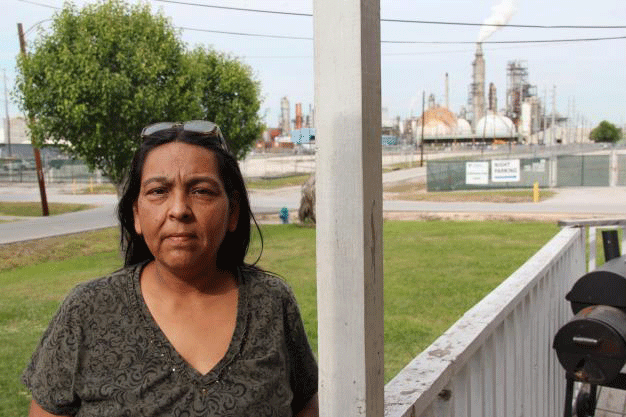
Apollonia Martinez on her front porch in Manchester, a Houston neighborhood, and a community next to the Houston Ship Channel. She said her son has asthma attacks from air pollution. (Photo: Reid R. Frazier))
Like Apollonia Martinez. She lives in Manchester, a low-income neighborhood between a rubber plant and a refinery. Standing on her porch, she says one of her sons has been having a lot of asthma attacks lately.
MARTINEZ: So every now and then I have to give him treatments because of his breathing problems at night.
FRAZIER: Martinez says she would like to leave Manchester, but can't afford rents in more expensive neighborhoods.
Business leaders admit that living next to a plant may not be ideal, but they point out that, except for ozone-the air in these neighborhoods generally meets federal health guidelines. Craig Beskid is executive director of the East Harris County Manufacturers' association - that's a local industry group.
He says Houston's chemical and refining sector contributes about 30,000 jobs to the local economy. And these are good paying jobs with salaries ranging from $40,000 to $200,000 a year.
BESKID: A great benefit in anyone's life is to have a good job. And when you live in a vibrant and growing economic area, good jobs are plentiful.
FRAZIER: And the plants provide these jobs while also releasing fewer and fewer emissions every year, he says. In fact, Houston might not even have the highest ozone in Texas anymore. That distinction might belong to Dallas Fort Worth. A big new source for emissions in that there? Fracking for natural gas.
CURWOOD: Reid Frazier reports for the public radio program the Allegheny Front.
Related link:
Allegheny Front
[MUX - BIRD NOTE® THEME]
BirdNote — The Perfect Nest box
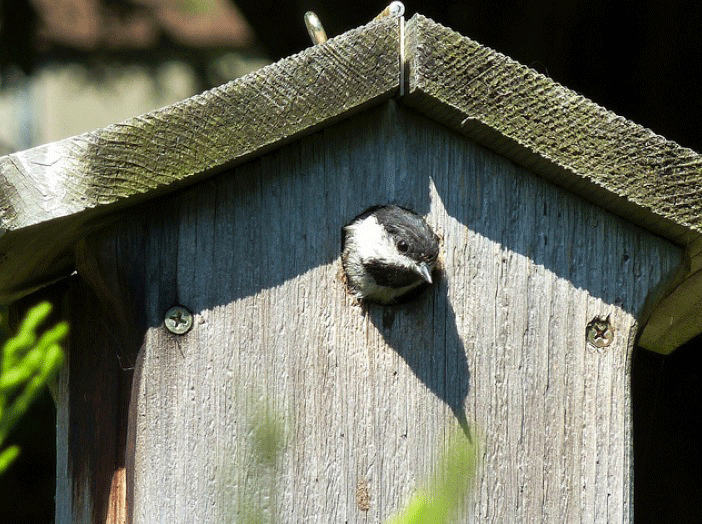
The "perfect nest box" and the tenant, a native Black-capped Chickadee (photo: Susan Robertson)
CURWOOD: If you want to see birds in your yard - there's no better way than to feed them - and encourage them to hang around by giving them somewhere appealing to live.
Sometimes, though, all one seems to attract are the ubiquitous starlings and sparrows.
So in today's BirdNote®, Michael Stein has some words of advice.
BirdNote®
The Perfect Nestbox
[SONGS OF HOUSE WREN, BLACK-CAPPED CHICKADEE, AND RED-BREASTED NUTHATCH]
STEIN: We’re hearing a House Wren
[HOUSE WREN SONG]
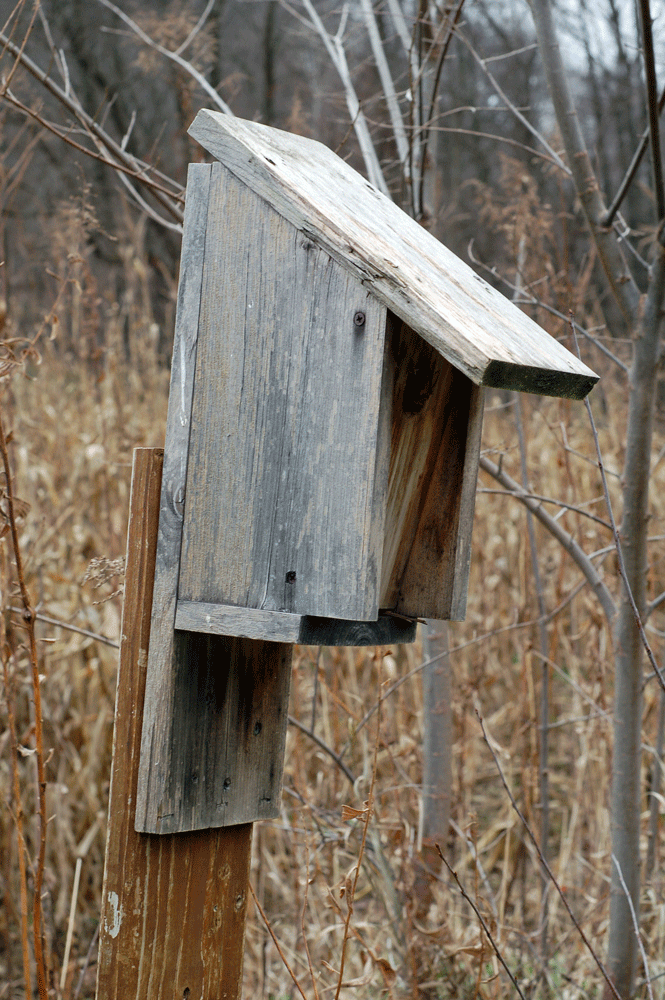
Sloped roof protects from weather and predators (photo: Ladyheart)
A Black-capped Chickadee
[BLACK-CAPPED CHICKADEE SONG]
And Red-breasted Nuthatch
[RED-BREASTED NUTHATCH CALL]
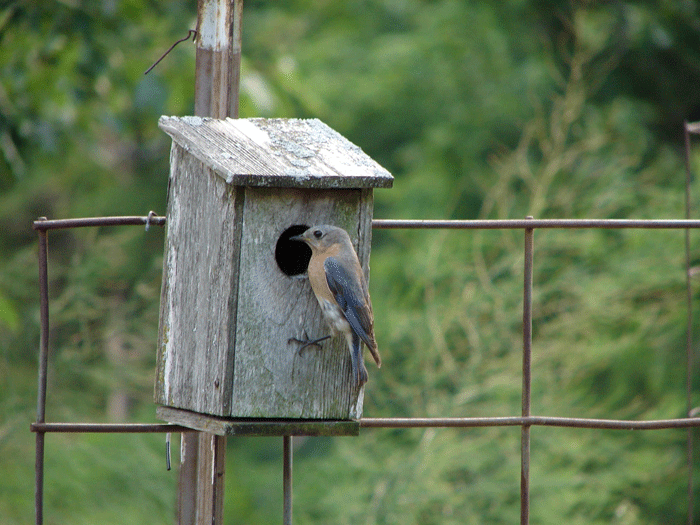
Female bluebird at home in a rustic nest box (photo: NDPetitt)
One of these birds might make its home in your yard, if you put up the right kind of birdhouse. They’re all “cavity-nesters,” birds that need a cavity in a tree—or a birdhouse that serves the same purpose—for nesting.

Perches invite non-native House Sparrows (photo: Steve BroGuggs)
[MORE MEDLEY]
Look for a nestbox that’s plain wood, none of that fancy stuff. Birds prefer their nest sites to be inconspicuous. If the birdhouse comes with a cute little dowel perch, remove it. The nesting birds don’t need the perch. And it just makes it easier for a predator bird to land and go after the eggs or young. Here’s the important part: grab a ruler and measure the entrance hole. It should be 1-1/8 inches. No more, no less, exactly one and one-eighth inches. If the entrance hole is too big, use an adapter to reduce the size. That size will let native birds in, and keep non-natives out. Now hang the box where it’s out of reach of any predator.
I’m Michael Stein
[MORE MEDLEY]
[Written by Frances Wood
Calls and songs of the birds provided by The Macaulay Library of Natural Sounds at the Cornell Lab of Ornithology, Ithaca, New York. Black-capped Chickadee song, House Wren and Red-breasted Nuthatch call recorded by G.A. Keller.
Producer: John Kessler
Executive Producer: Chris Peterson
© 2014 Tune In to Nature.org May 2014 Narrator: Michael Stein
http://birdnote.org/show/perfect-nestbox ]
CURWOOD: Hop on over to our website, LOE.org for some cute pictures of these native birds.
Related links:
- Check out the original story on the BirdNote® website
-
[MUSIC: Bill Frisell “Good Old People” from The Intercontinentals (Nonesuch Records 2013)]
CURWOOD: Coming up, the power of one in the face of environmental destruction. That's just ahead here on Living on Earth. Stay tuned.
ANNOUNCER: Funding for Living on Earth comes from the Grantham Foundation for the protection of the environment, supporting strategic communications and collaboration in solving the world’s most pressing environmental problems. The Kendeda Fund, furthering the values that contribute to a healthy planet, and Gilman Ordway for coverage of conservation and environmental change. This is PRI, Public Radio International.
[CUTAWAY MUSIC: Duke Ellington: “Midriff” from And His Mother Called Him Bill (RCA Records 1987 Reissue) Happy Birthday Duke 04/29/1899 – 05/24/1974)]
Beyond the Headlines
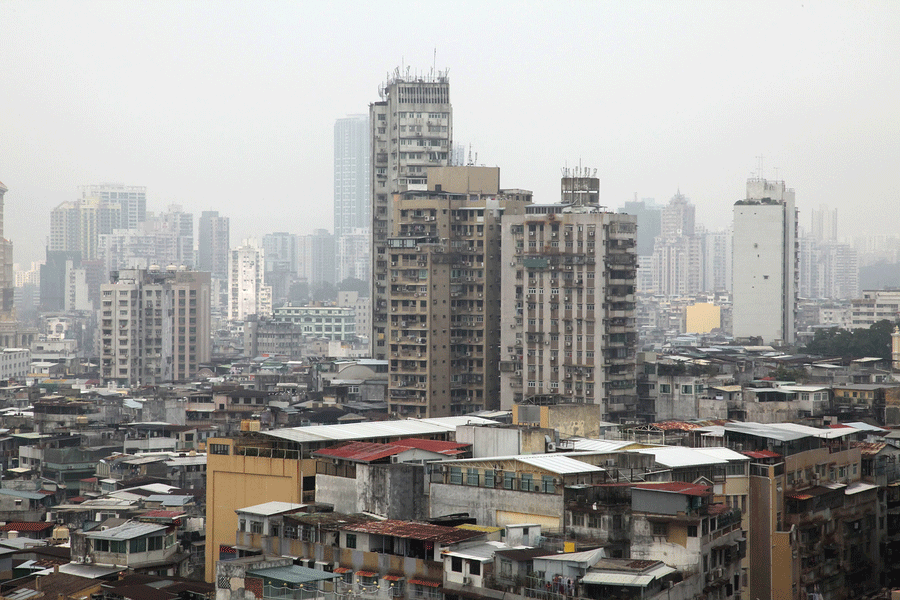
Air pollution in China (photo: bigstockphoto.com)
CURWOOD: It's Living on Earth, I'm Steve Curwood. Time to tunnel beyond the headlines now with our guide to that realm, Peter Dykstra. He publishes Environmental Health News, that's EHN.org and DailyClimate.org, and joins us on the line now from Conyers, Georgia. Hi there, Peter.
DYKSTRA: Hi, Steve. We're going to start you off with a little unusual problem. The agency in charge of enforcing air pollution laws in the state of Missouri has a pretty big problem right now.
CURWOOD: And what’s that...or I maybe I should say, "Show me!"
DYKSTRA: Well, here it is. Apparently they’ve done a terrific job. The Air Pollution Control Program at Missouri’s Department of Natural Resources funds itself by collecting fees from air polluters. They don’t get much. It’s about $40 per ton of pollutants, but industry has been cutting down on pollution in recent years. That’s an air-flow benefit for lungs in Missouri but it’s a cash-flow problem for the state’s bean-counters, and the air- pollution control program says they’ll go broke by 2016 if the they can’t find a fix.
CURWOOD: Well what about a fix to raise the fees beyond $40 per ton of pollution?
DYKSTRA: Exactly, and that’s what they’re thinking about, but that requires help from the Governor and from the legislature, and the earliest that can take effect if they agree is 2016, and that’s right about when the money runs out. But wait, there’s more! This bureaucratic clean-air nightmare gets even worse. Tighter Federal EPA clean air limits are going to kick in over the next few years. Missouri’s air will be even cleaner and that means its air pollution budget will be even leaner.
CURWOOD: So as they say, no good deed goes unpunished, huh?
DYKSTRA: I guess, but at least air pollution there is on the way down. Which is not the case in China, but there are some changes in the air there, too.
CURWOOD: Along with a lot of other things. But what’s new in China?
DYKSTRA: Well, for the first time in 25 years, the Standing Committee of the People’s National Congress has revised and upgraded China’s main environmental laws. They're promising stiffer fines against polluting industries and the new laws will make it easier for citizens and non-government groups to sue to enforce the pollution laws.
CURWOOD: Wait a second here, Peter. You’re saying, even with everything we hear about the massive pollution problems in China, this is the first sweeping government action in, what, a quarter century?
DYKSTRA: Yeah, can you imagine that? It’s one of the world’s biggest and most powerful nations, and its legislature can’t seem to get anything done on the environment? Have you ever heard of such a thing?
CURWOOD: Ummm, no…. I most definitely have! But China is a case unto itself for pollution.
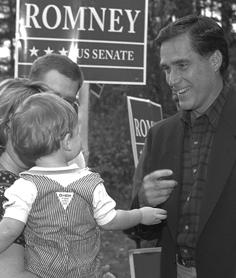
Former Massachusetts Governor, Mitt Romney (photo: Joeff Davis, Creative Commons 3.0)
DYKSTRA: It is. We picked up this story from Stuart Leavenworth, who covers China for the McClatchy newspaper chain, and his reporting says that one of the government’s motivators in stiffening these pollution laws is all of the public discontent that’s on the rise there, the widespread environmental protests that have been going on in China. But the state-run media is already managing expectations, saying that stronger laws alone won’t undo what they called “decades of reckless pollution.”
CURWOOD: Well there are over a billion people in China and if they're motivated to make these changes, it's going to be a big deal.
DYKSTRA: Well, yeah, but don't hold your breath, which might be itself healthy in China.
CURWOOD: Peter, what do you have on the history calendar this week?
DYKSTRA: Well, Steve, 10 years ago this week, a forward-thinking governor from Living On Earth’s home state enacted a sweeping plan to combat climate change. It was called the Massachusetts Climate Protection Plan. Governor Mitt Romney was at the head of it. He had outlined steps for the state to deal with climate impacts on severe storms, the coastline, freshwater, wildlife, human health and more.
CURWOOD: But wait, by the time he ran for President in 2012, Governor Romney wasn’t so sure about climate change.
DYKSTRA: By then he didn’t care much for universal health care either, even though that's something else he set up when he was Governor. Several times on the Presidential campaign trail in 2012 he said he wasn’t sure about manmade climate change anymore, and he thought that spending money on some kind of climate protection plan was a really bad idea.
CURWOOD: Peter Dykstra is publisher of Environmental Health News, that’s EHN.org, and the DailyClimate.org. Thanks so much, Peter for taking the time today.
DYKSTRA: Alright, thanks a lot, Steve, we'll talk to you soon.
CURWOOD: And there's more on these stories at our website, LOE.org.
Related links:
- Read more about the Missouri pollution program here
- The Sacramento Bee’s story on new pollution laws in China
- Massachusetts Climate Protection Program
[MUSIC: Trombone Shorty “On The Way Down” from Backatown (Verve Records 2012) Happy JazzFest 2014]
Goldman Environmental Prize Winners
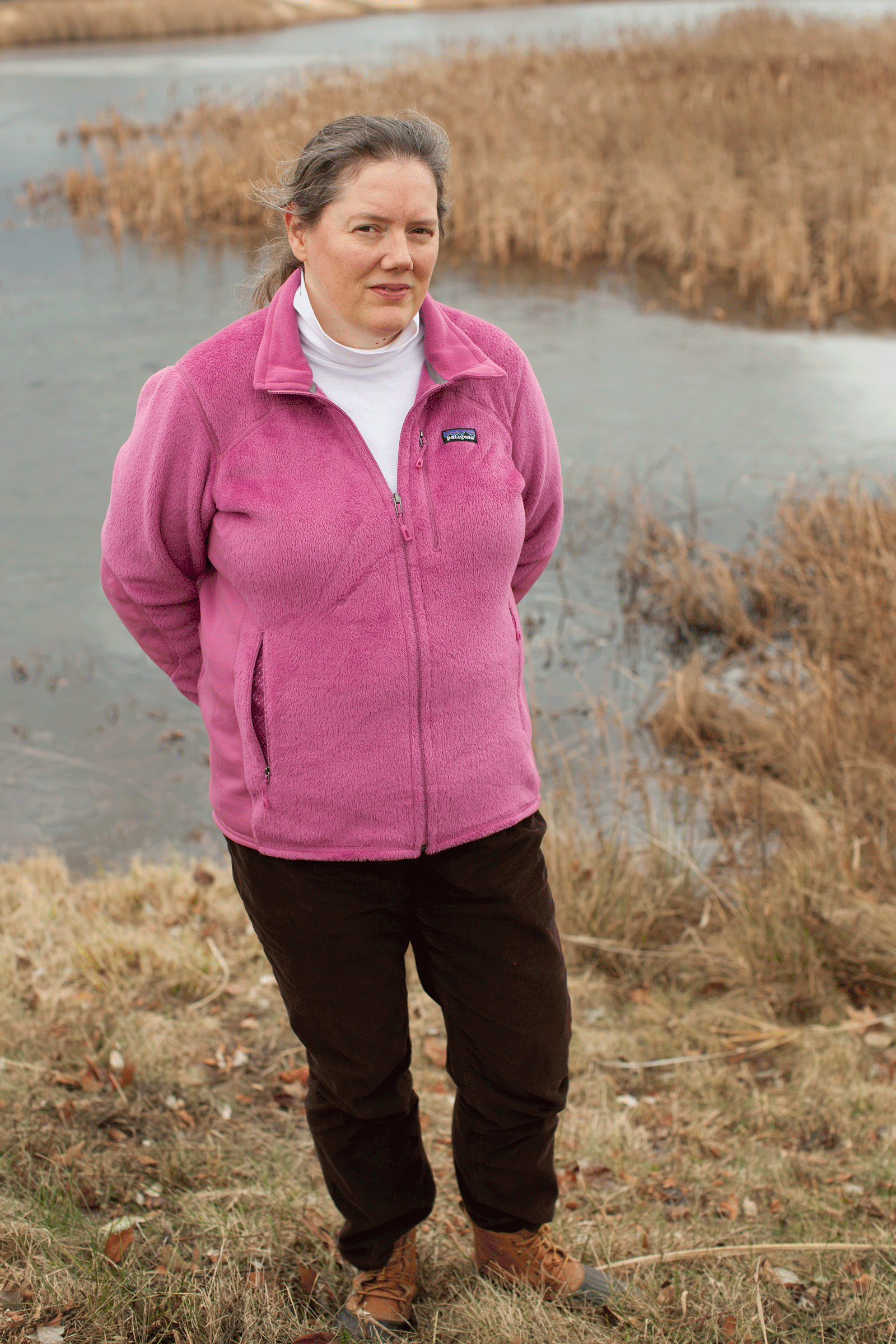
Helen Slottje near her home in Ithaca, NY (Photo: Goldman Environmental Prize)
CURWOOD: The Goldman Prizes are unofficially called the environmental Nobels. They single out an activist from each of the world’s inhabited continents with an award this year of $175,000. The 2014 recipients include Ramesh Agrawal from India who fought against the construction of new coal mines and Suren Gazaryan, who worked to expose the Russian government’s illegal seizure of protected forestland for construction of luxury homes. In Indonesia, Rudi Putra worked to protect endangered wildlife habitat from palm oil company deforestation. And Ruth Buendia fought against large scale hydroelectric dams that would have displaced indigenous communities in Peru.
We spoke with the two other 2014 Goldman Prize winners, Desmond D’Sa from South Africa and Helen Slottje from the United States. A former corporate lawyer, Ms. Slottje devised a strategy for local communities to block fracking in New York State, and explained how it came about.
SLOTTJE: My husband David's brother was looking for a small farm to move up to our area as a second home, and everywhere we went, there were gas leases, and the realtors told us, “Oh, it’s no big deal. It’s just a small oil and gas lease. Nothing to worry about.” And David was formerly a Texas lawyer and he said, “I’m from Texas, and there ain’t so such thing as a ‘no big deal oil and gas lease’.”
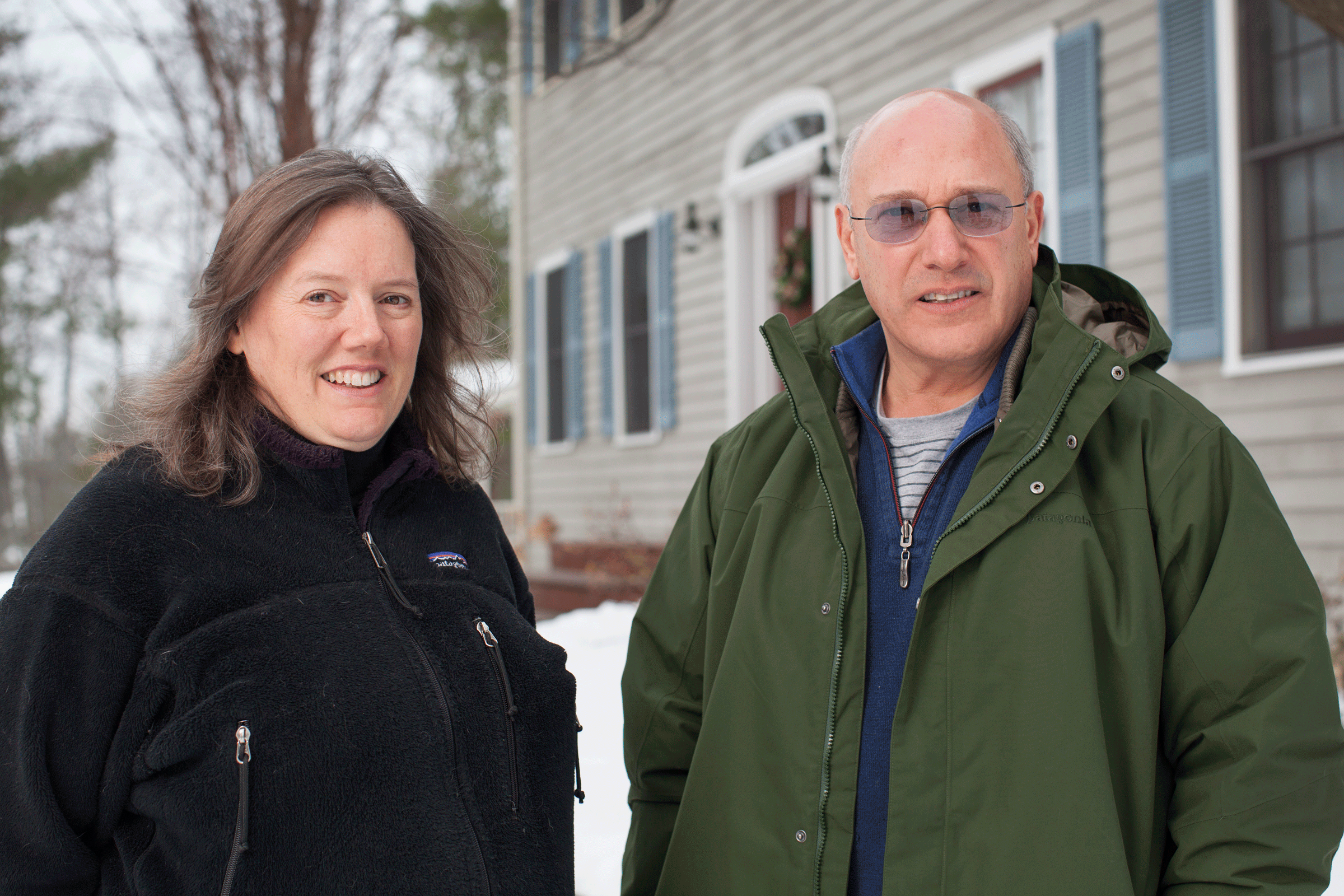
Helen Slottje and her husband David in front of their home in Ithaca, NY. (Photo: Goldman Environmental Prize)
And it took two years for us to sort of circle back to really getting involved, but that was the first sort of conscious-raising, and then in 2009, I went to a gas-drilling meeting, and they had pictures, and pictures of what had been happening in Pennsylvania. They were horrifying. There were these huge areas of land that had just been scraped bare, pits full of unknown fracking chemicals, and everyone said, “Well, there’s nothing we can do. This is coming. We should try to brace for impact. But we’re powerless.”
CURWOOD: But they didn’t know you would have a better idea, and what was that better idea?
SLOTTJE: David and I are both lawyers, so this just seemed wrong to us. And it just seemed there had to be something we could do. So we set about determining, you know, is the federal goverment going to protect us? No. Is the state government going to protect us? No. What can we do at the local level? And everyone said, “Nothing.” But we looked and found that while we couldn’t regulate the industry, they could use zoning laws to say, “there’s no place in our community where this is appropriate, this is an incompatible land use, and you’re not allowed to do this at all in our town”.
CURWOOD: In other words, just say no.
SLOTTJE: Right. Just say no. No fracking way.
CURWOOD: So, in the end, you started something of a small movement, but it spread across upstate New York. How did that work, and how did you feel?
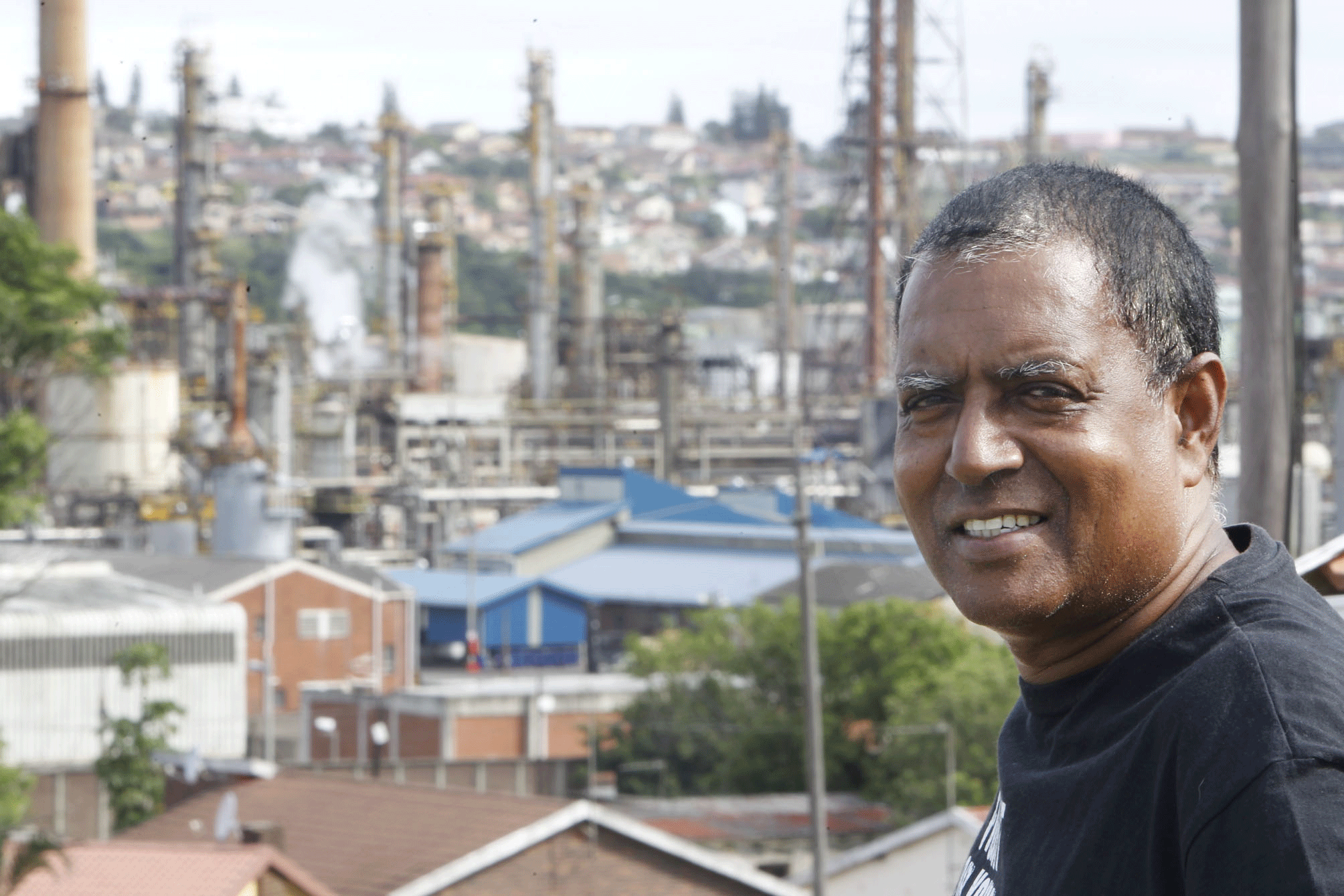
CAPTION (Photo: CREDIT)
SLOTTJE: It was amazing. We were developing this idea that a town could use zoning to prohibit these high-impact industrial uses, and we mentioned it at a meeting. And the people that heard us talk about this in one town went out and started a petition drive on their own to have their town be the first town to enact one of these laws. So we began drafting a law for the task force in that town and from there it took a lot of convincing for the first few towns, but after we had about seven or eight towns that passed these sort of laws, there was a paradigm shift where communities began to say, “Why don’t we have these laws?” So it went from seven to eight towns to now close to 200 towns have taken some sort of action passing a local law of one variety or another.
CURWOOD: So what’s the legal status of fracking in New York state right now? Now, the governor’s supposed to make a decision on fracking statewide. If he were to approve that how would that affect the communities who have banned fracking?
SLOTTJE: Well, those bans would still stand. The Department of Environmental Conservation in New York is conducting an environmental review, and the commissioner of the DEC ultimately reports to the governor, hence people talk about it as Governor Cuomo’s decision, although it’s really supposed to be the Department of Environmental Conservation. But if they were to find that fracking could be done safely, then that would leave open still this issue of local control, and Governor Cuomo himself has said that the idea of the concept of local control makes sense to him. The industry has challenged these local bans particularly in two lawsuits that are now waiting to be heard by the New York court of appeals. You never know for certain, but our expectation is that the court of appeals will uphold the trial court and the appelate court’s unanimous decision saying that, yes, towns can use zoning to prohibit gas drilling.
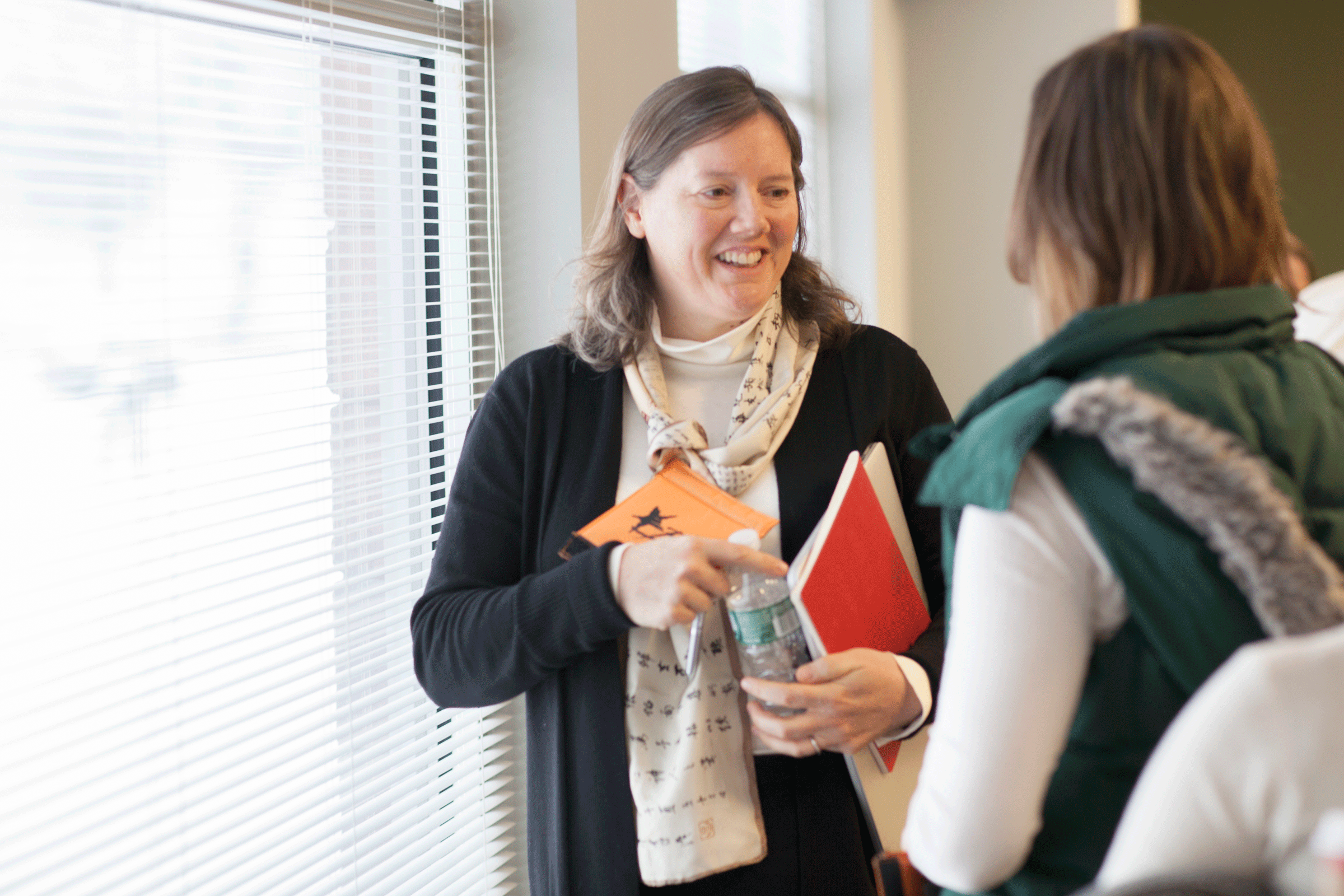
Helen Slottje talks with an audience member after a town meeting. (Photo: Goldman Environmental Prize)
CURWOOD: Helen, I want to turn now to another winner of the Goldman prize this year, Desmond D’Sa. Desmond D’Sa, please tell me about South Durban in South Africa, where you’re from.
D’SA: South Durban is the home of 70 percent of Durban’s industries and factories. It’s got over 300 smokestacks, and it’s got, including with the smokestacks, one of the biggest chemical storage facility in the southern hemisphere, two of the biggest petrochemical and crude oil refineries and paper mills and in amongst all that are people, and predominantly poor black folks.
CURWOOD: Now, how did your family come to live this part of Durban?
D’SA: Well, during the 1969 Separation Act during the apartheid era, that act separated people of color and displaced poor black communities and forced them out of the area where we came from. Where were lived there was clean running water, fresh air, clean soil where we planted our own vegetables in the garden, and forced and relocated to live alongside dirty industries in a four-room house which we call the state projects in South Africa.
src="//www.youtube.com/embed/ZNcJjkMee4w" frameborder="0" allowfullscreen>
CURWOOD: Well, I understand South Durban is also notoriously known as “cancer valley”. Tell me about some of the health problems people experience there.
D’SA: Over half the population have respiratory disease such as asthma, which is chronic asthma. Children in South Durban, the risk of cancer was 25 in 100,000 people, and the national norm was 1 in 100,000. We have a very high leukemia rate, just in a door-to-door study done by and confirmed by the Nelson Mandela medical school in Durban, was that the children in South Durban, their leukemia rate is 24 times the norm, and that’s besides all the skin rashes and other respiratory illnesses that children are affected with. What alerted me to all this was the constant government ambulances coming to my neighborhood at all hours of the day and night, bringing with them oxygen cylinders and nebulizers so that children could breathe freely.
CURWOOD: So, people were forced into this neighborhood back in apartheid, but as I understand it, the straw that broke the camel’s back for you came well after apartheid ended in 2009. Tell me about the toxic waste landfill that got you so concerned.
D’SA: Well, the toxic waste landfill had been operating for a number of years in black neighborhoods, and toxic landfill sites are never managed properly in South Africa. And in 2009, the waste company was wanting to expand the landfill site to three times its normal size, that would have made it the biggest landfill site in post-apartheid South Africa. We lobbied strongly, we engaged with the waste company and government, and during that period we were able to ensure instead of expanding, to turn around the discussion to closure. On November 15, 2011, a few days before the United Nations Conference of the Parties, COP 17 in Durban, the landfill site eventually was closed.
CURWOOD: Tell me about the things that were dumped in that toxic waste landfill there in South Durban. What were some of the chemicals you found?
D’SA: We found some heavy metals like cyanide and mercury. We found other toxic chemicals, ameliea acrolites, acrolites were dumped there, and basically all the heavy sludge from the recycling companies were dumped at the toxic landfill site, brought and dumped there.
CURWOOD: How did you feel about that living there?
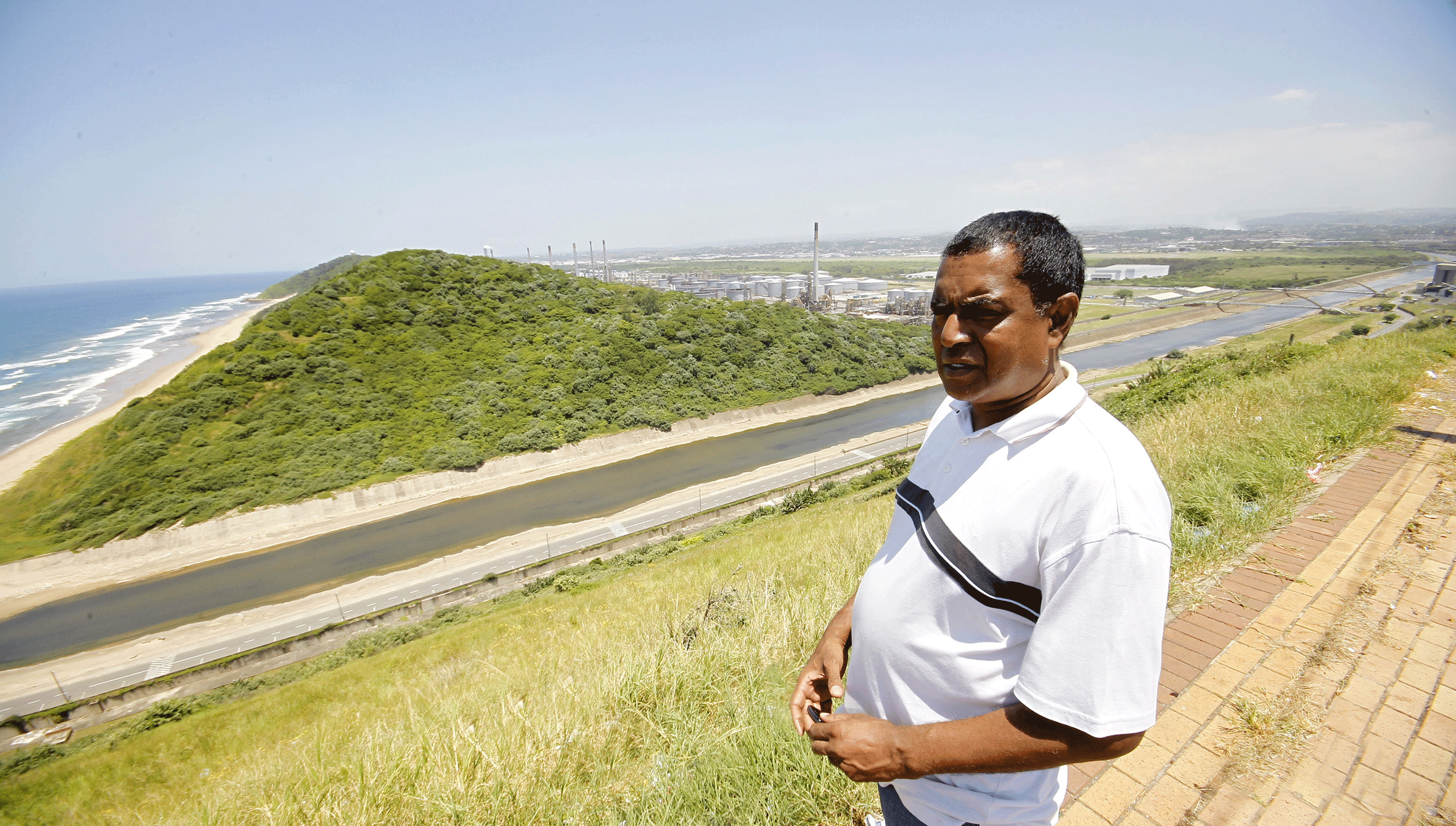
Desmond D’Sa surveying the area that will be affected by the proposed Port of Durban expansion. (Photo: Goldman Environmental Prize)
D’SA: Well, I was outraged about it. I must tell you, my personal experience, I’ve had a brother die of cancer in the area, I’ve had a daughter who’s had chronic asthma, and I’ve got a grandchild that’s got chronic asthma. After seeing a seven-year-old child diagnosed with leukemia, I decided then and there I was never going to give in, I was going to stand up, I was going to develop the data and gather all that information and make sure that toxic landfill sites were never going to be placed in black communities again.
CURWOOD: Now, your two stories have actually quite a bit in common. I understand that each of you were subject to intimidiation and harrassment from the industries you were fighting against. Helen, what kind of intimidation happened to you as you were taking on the fracking industry?
SLOTTJE: People would say that we weren’t competent lawyers, that my husband had failed the bar several times, which was not true. That what we were proposing would subject anyone who listened to us as town officials to personal liability, that industry would come and sue the town and not just the town, but these town board members individually and that the individual town board members would lose their homes if they were to take our advice. People would follow us around after meetings, yelling at us, following us out to our cars, they would videotape everything we said everywhere we went as proof that they were going to submit all of this as some sort of evidence that we were incompetent or committing malpractice.
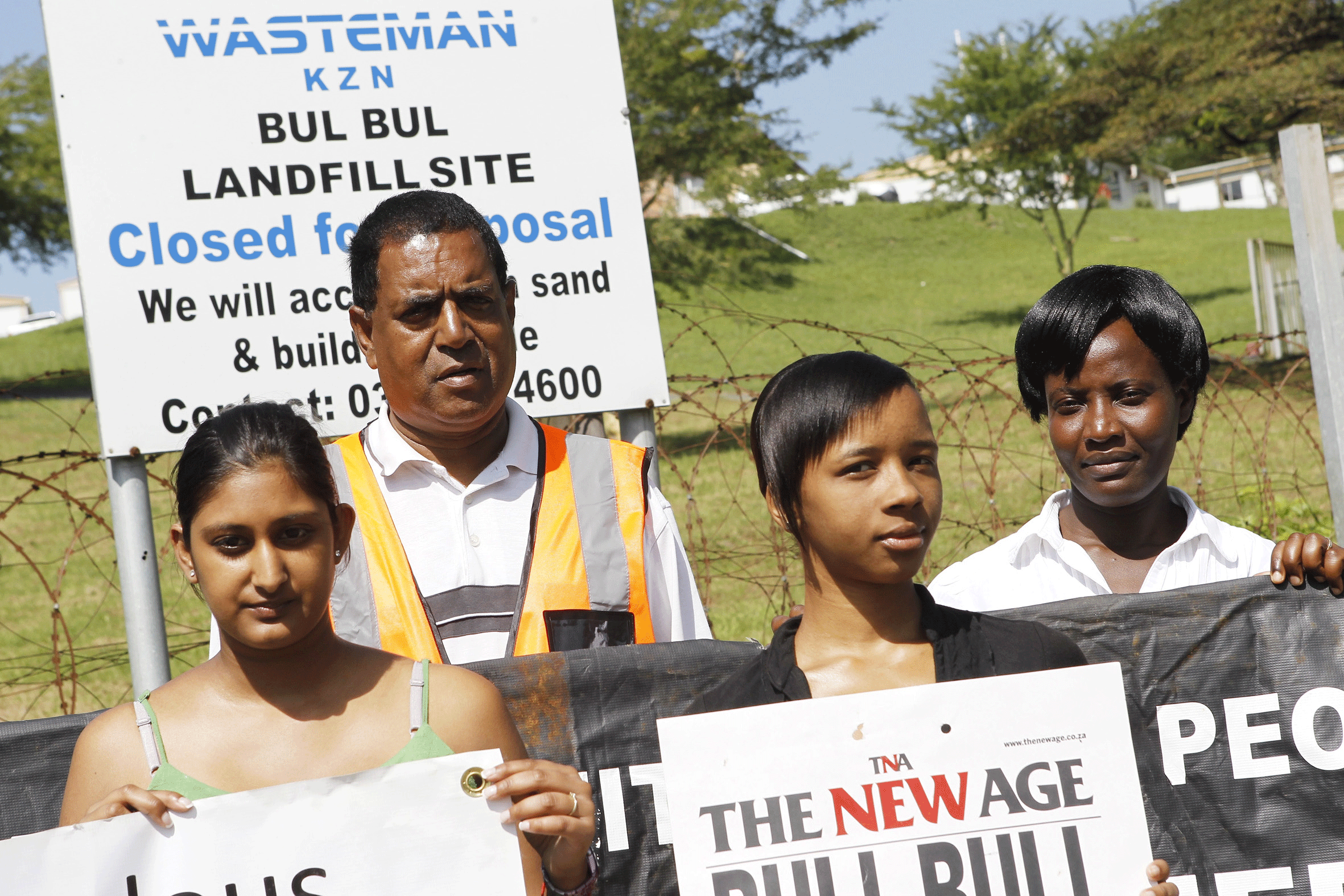
Desmond D’Sa and his team at the former site of the Bulbul Drive landfill in Durban, South Africa. (Photo: Goldman Environmental Prize)
CURWOOD: Desmond, tell me, what sorts of things happened to you?
D’SA: Well, there’s been a host of things happening to me. One was that my home was firebombed in 2007, resulting in one of my daughters being affected, traumatized, and myself being burned, facial burns, and I had burns all over my arms. My wife was traumatized so much so she left the area and didn’t live with me for a number of years, so I’ve had to pay the price. But when I was in the hospital, the very morning that my house was firebombed, I discharged myself out of the hospital because I knew there and then I had to go back and show my resolve and to show that no amount of threat or even attempts to kill me will deter me from doing what is right.
CURWOOD: Desmond, what’s next for you? Landfill is closed. Problem solved?
D’SA: Not really, you know, back home in Durban, since post-apartheid, we have the biggest social upheaval that will ever take place with the expansion of the Durban harbor. There’s a brand new dug-out port that’s going to link the present harbor, Durban is the biggest container port at the moment, and they want to expand it further, resulting in those who have suffered before as products of forced removal being removed once again. It took us 40 years to rebuild our homes, to rebuild stable communities, to build our own schools, to build recreational areas, and all this is under threat once again. What we are calling for is a sustainable business model that takes into consideration, that improves the community, that doesn’t allow community areas to be decayed, that provides access and sanitation and energy to poor communities living in humane conditions in South Durban.
src="//www.youtube.com/embed/_erEf4zI0BI" frameborder="0" allowfullscreen>
CURWOOD: Helen, what about you? What are you going to do if the state of New York now approves fracking?
SLOTTJE: Well, part of our work will be continue with the local bans in the state of New York. And we also want to use this opportunity with the Goldman prize to spread the word that communities have the right to decide what happens in their communities. And that’s one of the common threads between all of the prize recipients is this grassroots action, local action, and trying to work to inspire people to stand up and to say, “I’m not going to take this any more - this racism, this inequality, this inability to control our own destinies and to truly be secure in our own homes”. There are places across the country that are interested in learning more about what we did in New York and how it can be adapted to their state and so we’re looking to further our message as well.

Desmond D’Sa near his home in Durban, South Africa. (Photo: Goldman Environmental Prize)
CURWOOD: I want to thank you both for taking this time.
SLOTTJE: Alright, thank you so much.
D'SA: Thank you so much.
CURWOOD: Helen Slottje won the North America Goldman Prize this year for her work opposing fracking in New York State, and the Africa prize went to Desmond D'Sa of South Africa.
Related link:
2014 Goldman Environmental Prize winners, where there are videos of all six recipients.
[MUSIC: Duke Ellington “Mount Harissa” from The Far East Suite (RCA Records 1966)]
Living on Earth is produced by the World Media Foundation. Naomi Arenberg, Clairissa Baker, Bobby Bascomb, Emmett Fitzgerald, Helen Palmer, Catalina Pire-Schmidt, Adelaide Chen, James Curwood and Jennifer Marquis all help to make our show. Jeff Turton is our technical director; we had engineering help this week from Jake Rego, Noel Flatt and Dana Chisholm. Special thanks to the Fund for Investigative Journalism for our story from Houston. Alison Lirish Dean composed our themes. You can find us anytime at LOE.org, and like us on our Facebook page, it’s PRI’s Living on Earth. And we tweet from @LivingOnEarth. I'm Steve Curwood. Thanks for listening.
ANNOUNCER: Funding for Living on Earth comes from the Grantham Foundation for the protection of the environment. Supporting strategic communications and collaboration in solving the world’s most pressing environmental problems. The Kendeda Fund, furthering the values that contribute to a healthy planet, and Gilman Ordway for coverage of conservation and environmental change. Living on Earth is also supported by a friend of The Nation, where you can read such environmental writers as Wen Stephenson, Bill McKibben, Mark Hertsgaard, and others at TheNation.com. This is PRI, Public Radio International.
ANNOUNCER 2: PRI, Public Radio International.
Living on Earth wants to hear from you!
Living on Earth
62 Calef Highway, Suite 212
Lee, NH 03861
Telephone: 617-287-4121
E-mail: comments@loe.org
Newsletter [Click here]
Donate to Living on Earth!
Living on Earth is an independent media program and relies entirely on contributions from listeners and institutions supporting public service. Please donate now to preserve an independent environmental voice.
NewsletterLiving on Earth offers a weekly delivery of the show's rundown to your mailbox. Sign up for our newsletter today!
 Sailors For The Sea: Be the change you want to sea.
Sailors For The Sea: Be the change you want to sea.
 The Grantham Foundation for the Protection of the Environment: Committed to protecting and improving the health of the global environment.
The Grantham Foundation for the Protection of the Environment: Committed to protecting and improving the health of the global environment.
 Contribute to Living on Earth and receive, as our gift to you, an archival print of one of Mark Seth Lender's extraordinary wildlife photographs. Follow the link to see Mark's current collection of photographs.
Contribute to Living on Earth and receive, as our gift to you, an archival print of one of Mark Seth Lender's extraordinary wildlife photographs. Follow the link to see Mark's current collection of photographs.
 Buy a signed copy of Mark Seth Lender's book Smeagull the Seagull & support Living on Earth
Buy a signed copy of Mark Seth Lender's book Smeagull the Seagull & support Living on Earth

